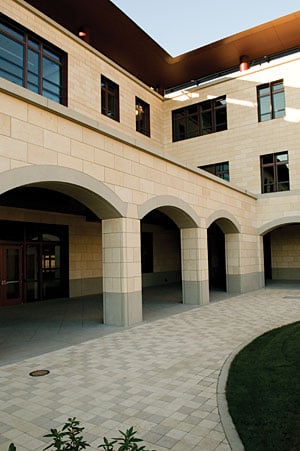Amid the coronavirus pandemic, Stanford is moving forward with plans for its new climate and sustainability school. However, students are continuing to cite concerns regarding diversity, fossil fuel dependency and external input.
President Marc Tessier-Lavigne established the school in May after the University accepted a recommendation drafted by a faculty committee. The school will grant both undergraduate and graduate degrees, like the current school of Earth, according to Stephan Graham, dean of the School of Earth, Energy & Environmental Sciences.
According to Vice Provost and Dean of Research Kam Moler, there are also “aspirations” to build a physical space on campus for the school. Moler said the planning process will take part both with Stanford and its surrounding community.
Despite the disruptive nature of the pandemic, Graham said “nothing has changed about the imperative [or] the need for this school.”
“The pandemic is one manifestation, at least in part, of the issues we’re facing with regard to climate change and disease vectors,” he said. “I think it’s more important than ever that we try and move towards being more impactful with regard to everything we do in sustainability, climate change and all related things.”
Graham and Moler also plan to include more student input in the future. While the two say they have had informal conversations with Students for a Sustainable Stanford, Graham said “there’ll be many more opportunities to come.” According to Moler, there may be a more formal comment period during the winter quarter.
Ryan Treves ’22, co-director of Students for a Sustainable Stanford, said he believes “that student involvement has to take place through a diversity of mediums that don’t always place administrators with all the power in the discussion.”
“We’re ready to work with them, and we want the communication to be continual,” he said.
Treves recognized that the “new school is undoubtedly a positive position,” but also added that “Stanford Earth really needs to take this opportunity to critically address first its deep and really mutually beneficial research ties with extractive fossil fuel industries,” as well as “a pretty dismal track record of faculty diversity and lackluster support for environmental justice scholarship.”
“Unless new voices are brought to the table and truly listened to, we’re just going to perpetuate patterns that have created these issues in the current school,” Treves said, citing previous diversity concerns about and within the Stanford Earth community.
In an email to The Daily, Moler and Graham wrote that “as we move ahead in planning for the new school,” diversity, equity and inclusion are “integral to the vision, and in a school where the impact of climate change on human populations is a focal point, environmental justice will be an important element.”
The deans also expressed interest in moving toward “carbon-free or low-carbon energy systems as soon as possible” at the School of Earth.
“Since we can’t flip a switch and instantly get to a fully green energy system, we must in the meantime manage fossil fuels in the most responsible manner possible, which likely entails collaborations with the petroleum industry,” the deans wrote.
Graham and Moler have established a Blueprint Advisory Committee (BAC) and an External Advisory Committee to gain input from a variety of voices. The BAC is made up of around 30 faculty members from all seven schools that will aid in the design of the school.
“Sustainability is something that permeates everything in society and similarly is spread all across the University,” Graham said.
According to Moler, the BAC is working on four long-term goals: academic structure, cross-cutting research themes, educational programs and engagement in the world beyond Stanford.
The External Advisory Committee, chaired by Akiko Yamazaki ’90, will advise both Stanford and “other universities and nonprofit organizations in the sustainability space,” giving them a more national perspective on issues of sustainability, according to Moler.
Yamazaki did not respond to request for comment.
“They’re helping us do a little bit of comparative anatomy and think about the most effective ways for us to engage and have impact in a way that’s true to our role as a university that’s focused on research and education,” Moler said.
Contact Benjamin Zaidel at bzaidel ‘at’ stanford.edu.
